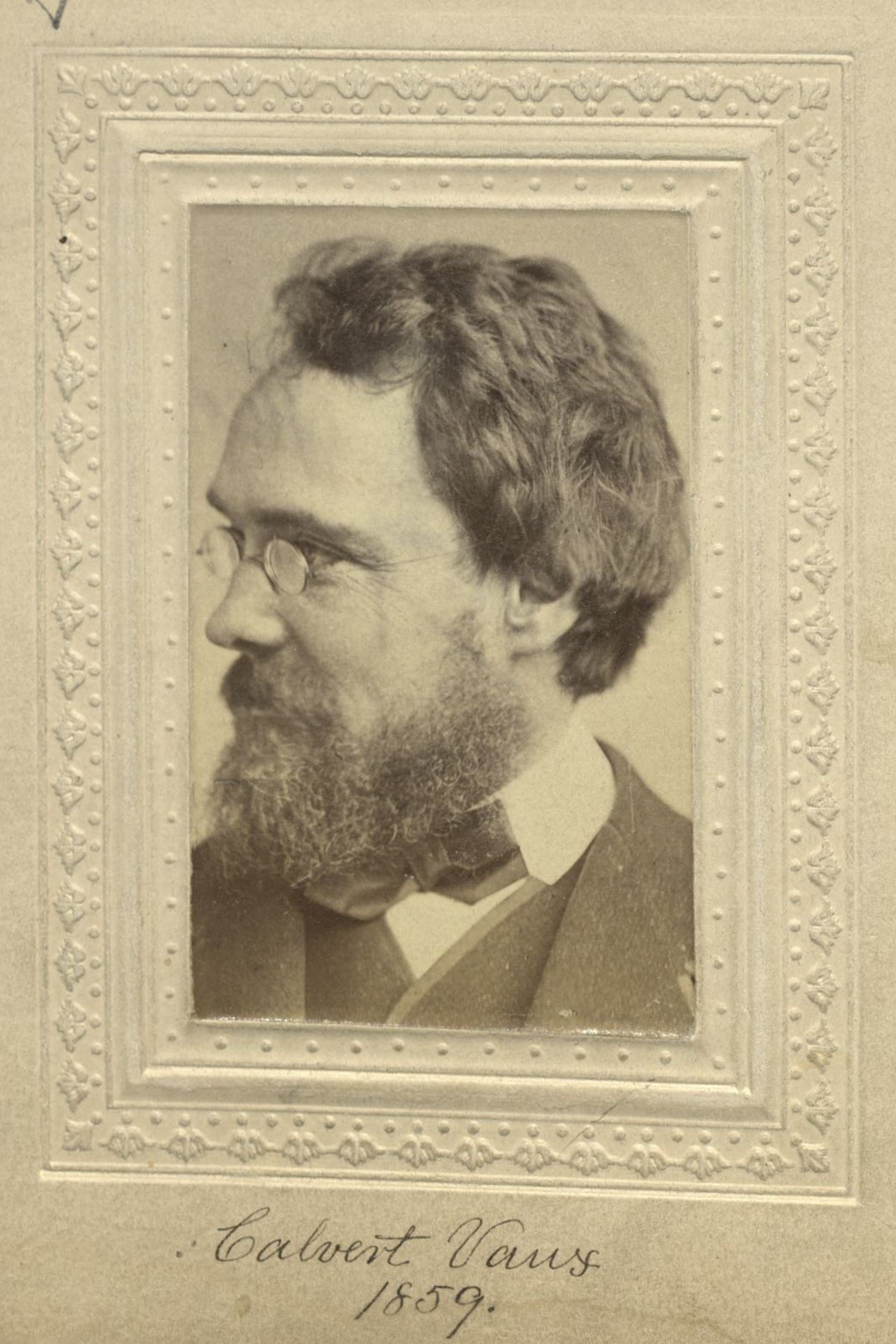Landscape Architect
Centurion, 1859–1895
Born 20 December 1824 in London, England
Died 19 November 1895 in New York (Brooklyn), New York
Buried Montrepose Cemetery , Kingston, New York
, Kingston, New York
Proposed by Joseph C. Wells
Elected 4 June 1859 at age thirty-four
Archivist’s Note: Father of C. Bowyer Vaux; brother-in-law of Jervis McEntee
Century Memorial
The City of New York, and indeed the entire country, owes a debt of gratitude to Calvert Vaux, which, as time goes on, they will more fully realize.
Having been trained by association with Andrew J. Downing, one of the earliest landscape gardeners of America, he became fitted for the great work, which, in connection with Frederick Law Olmsted, he inaugurated and completed—the Central Park of the City of New York, which to-day stands as a monument among all students of the art of park-making. Those of us who remember the original condition of that beautiful pleasure ground, the difficulties of the problems to be solved, the opportunities it afforded for costly mistakes, and now see the result of the ability and forethought, which, under plastic hands, brought order and beauty out of chaos to be an ornament and a blessing for all times, can realize how fortunate was the selection of the men who wrought so well. Besides his share in this great creation, the magnificent foundation of a system which some day will surpass that belonging to any other city in the world, he, with his associate, designed the Prospect Park in Brooklyn, Morningside and Riverside Parks, as well as the new ones now in process of preparation, the public parks of Chicago, Buffalo, and the State Reservation at Niagara Falls, which gave them the reputation as the first experts in America.
He was for many years the landscape architect of the city, and the supervision of a man like him over our splendid public grounds must always be counted as a happy piece of fortune.
He was noted as an architect; but it was in the open air, expressing the ideas and serving the ends of park-making, that he exhibited the refinement of taste and learning that comes from thorough and appreciative study and a broad and liberal conception of the result to be achieved, the comprehension and far-sighted judgment which brought him his deserved reputation.
In addition to all these qualifications, he was a model public officer, with an appreciation of the rules and obligations of public office unsurpassed. Nothing could have induced him to degrade his art or misuse the reputation which secured his employment, by consenting to modify his criticism, or give the sanction of his name to a plan he could not approve. He was a modest and unassuming gentleman, a most genial companion, a loyal and incorruptible public servant, and as such we shall remember him.
Henry E. Howland
1896 Century Association Yearbook

